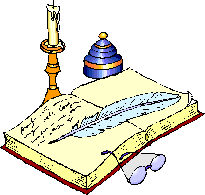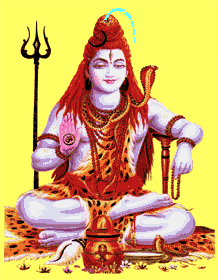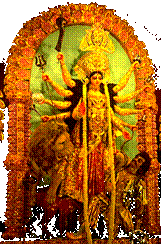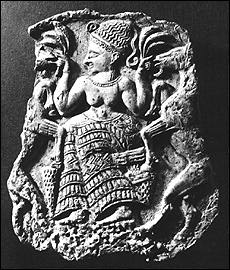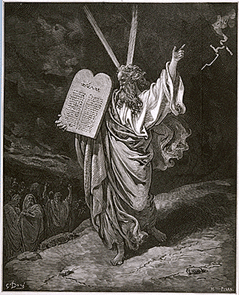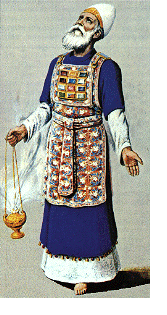|
___________________________________________________________________ Diary of an Ancient Traveler (traveling at the speed of light) A Journey to find my Genealogy Sujoy Deyasi  Mixed Media by: Sujoy Deyasi, 1999. __________________________________________________________________ _________________________ This book is dedicated to my Mother  Parul Bala "Mother you have suffered so much for me" ________________________ __________________________________________________________________
Diary of an Ancient Traveler (traveling at the speed of light) Sujoy Deyasi 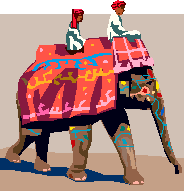 In my research to investigate my genealogy I came to know that my parents were descendants from the Sadducee faction - sect (2nd.c. BCE to 1st.c. CE) of Judea - Israel and Essenes (2nd.c.BCE to 3rd.c.CE) of Qumran, Israel. My mother's genealogy is a direct descendant from historicalJesus (evolved from the Hebrew word "Yeshua," means "He who helps") of Nazareth, also known as Prophet Issa (Arabic name). I also came to know that my ancestors had left Judea - Israel, after the mock
(
Jesus in India) crucifixion of historical Jesus of Nazareth, or during or after the destruction of the Second Hebrew Temple known as the "Last Revolt" that occurred on 66 CE and settled in India.
In my research to investigate my genealogy I came to know that my parents were descendants from the Sadducee faction - sect (2nd.c. BCE to 1st.c. CE) of Judea - Israel and Essenes (2nd.c.BCE to 3rd.c.CE) of Qumran, Israel. My mother's genealogy is a direct descendant from historicalJesus (evolved from the Hebrew word "Yeshua," means "He who helps") of Nazareth, also known as Prophet Issa (Arabic name). I also came to know that my ancestors had left Judea - Israel, after the mock
(
Jesus in India) crucifixion of historical Jesus of Nazareth, or during or after the destruction of the Second Hebrew Temple known as the "Last Revolt" that occurred on 66 CE and settled in India.Legend and tradition trace back the earliest Hebrew settlement in India from the time of King Solomon to the period of the destruction of the second Hebrew Temple. In the Hebrew Bible reference to India is made only in the Book of Esther (1:1, 8:9), where the boundaries of the dominion of King Ahasuerus of Persia, are said to have stretched from Hoddu to Kush. "Hoddu," a term derived from Sanskrit and the old Persian word "Hindu," became the Hebrew rendering of India, while "Kusk" was generally regarded as the term for "Ethiopia." Some of my ancestors live near Jodhpur, a short distance from the city Ajmar, in the state of Rajasthan, Northern India. The largest concentrations of Babylonian Hebrews in India are in Delhi, Kolkata (Calcutta), Bombay, Thana and Poona.
Upon my investigation of the route that my ancestors might have traveled I came to know the fate of the following civilizations: (a) Babylonian Hebrews: (Mesopotamia—Modern-day Iraq). (b) Minoan Civilization: (Island of Crete) The Minoan culture was centered in the Island of Crete, Aegean Sea, prior to the Aegean Greeks and reached its peak in 1600 BCE. The Aegean Civilization developed predominantly in Crete, mainland Greece, and the Cyclades Islands during the Bronze Age (3000-1200 BCE). The Greeks of that period associated the earlier supremacy of Crete with Minos, one of several legendary rulers of Crete. The Cretan civilization is named for the legendary King Minos and called Minoan. The mainlanders was called Mycenaean, after Mycenae, its most important city. Little was know about Minoan culture until in 1894, Sir Arthur Evans, a British archaeologist, and his assistant Duncan McKenzie, also an archaeologist, began a series of excavations in the island of Crete. In 1900 a great palace at Knossos, (located near the modern city of Iraklion) associated with King Minos and the labyrinth was discovered. Evans also found baked clay tablets with two types of writing, dating from the middle of the 2000 BCE; these are called Linear A and Linear B. More Linear B tablets, dating from about 1200 BCE, were found at Pylos and other Mycenaean sites. The British cryptologist Michael Ventris (1922-1956) and John Chadwick (1920- ), a classical scholar, proved that Linear B is an ancestor of the Arcado-Cyprian dialect of Greek; the inscriptions are dated between 1500 and 1150 BCE. Linear A, the language of Minoan Crete, has not yet been deciphered. A theory proposed in 1957 by the American Semitics scholar Cyrus Gordon(1908- ) argues that the Linear A script transcribe a form of Akkadian, a Semitic language of Babylon and Assyria and was used between 1700 and 1500 BCE. Minoan religion featured a female snake deity, whose worship involved the symbolism of fertility and the lunar and solar cycles. The central cult figure, however, may have been a goddess of a Middle Eastern type, together with her dying and resurrected consort that was symbolic of the seasons. Among many paintings that were found during excavation of the ruins the most conspicuous were scenes of bull-leaping, a sport that may have given rise to the later Greek myth of the Minotaur. The legend is that monarch Pasiphaë, wife of King Minos, and a snow-white bull gave birth to the Minotaur, a monster with the head of a bull and the body of a man. The god Poseidon had sent the bull to Pasiphaë’s husband, and when Minos refused to sacrifice the beast, Poseidon made Pasiphaë fall in love with it. Minos ordered Daedalus, a royal engineer to construct a labyrinth so intricate that escape from it without assistance would be impossible. Here the Minotaur was confined and fed with human sacrifices. Every nine years the Athenians were forced to send seven youths and maidens to Minos to be devoured by this monster. The Greek hero Theseus was determined to end these useless sacrifices. When the time came to send the tribute, he offered himself as one of the victims. When Theseus reached Crete, Minos’s daughter, Ariadne, fell in love with him. Ariadne gave Theseus a ball of thread, which he fastened to the door of the labyrinth or the maze and unwound as he made his way through it. When he came upon the sleeping Minotaur, he beat the monster to death and then led the other sacrificial youths and maidens to safety by following the thread back to the entrance. Scholars concluded that the Minoan’s trading sphere included the mainland, the Cyclades, the Middle East, Egypt, and Sicily. The Island of Crete was never fortified indicating that King Minos was protected by a strong navy and perhaps had maintained a marine empire. Minoan Civilization existed from the following periods: Pre-palace period: 2600-1900 BCE. First palace period: 1900-1700 BCE. Second palace period: 1700-1380 BCE. According to Arthur Evans the Minoan Civilization was destroyed between 1400-1450 BCE. Post-palace period: 1380-1100 BCE. Minoan civilization was dated pre-Mycenaen and Classical Greece. The destruction of Knossos and the collapse of Minoan culture coincided with the beginning of the most flourishing period of Mycenaean civilization in Greece. Scholars concluded that this coincidence is due to warlike Mycenaeans attacked and destroyed the Minoan civilization. What destroyed the Minoan Civilization? Archaeologists and scholars connected this destruction with the massive volcanic eruption on Thera that caused the total destruction of the Island of Santorin. Scholars speculate that the volcanic eruption occurred around 1645 BCE. The legend of Atlantis mentioned by the Greek philosopher Homer’s in his epic is thought to have originated from this destruction. Shortly after 1200 BCE, the Aegean civilization was completely destroyed. Where did the Minoan people who survived the destruction due to volcanic eruption travel? (c) Canaanites: In the Old Testament they are mentioned as the original inhabitants of the land of Cannan, an area designated to the West of the Jordan River, later known as Palestine. According to the Book of Judges, the Israelites, during the 2000 BCE, or earlier, gradually subjugated the Canaanite cities. Around 1200 B.C.E., (late Bronze period: 1500-1200 BCE) the Indo-European "Sea-People," armed with iron weapons and whose origin is still unknown poured from northern Aegean, invaded the coastal Levant driving back the Egyptians and Assyrians. These invaders destroyed the city of Ugnat, among other cities, and founded the state of Philistines, the arch-enemy of ancient Israel. Scholars speculate that these invaders might have been Northern Europeans or Baltic people. Recent discoveries indicate that before Hebrew conquest of the South of Canaan, the Canaanites and the Phoenicians constituted a single nation, and that the people now known as the Phoenicians (modern-day Lebanon) subsequently developed as a separate nation. By the end of the reign of Solomon, (973-933 BCE) King of Israel, the Canaanites had virtually been assimilated into the Hebrew people, among whom they appear to have exerted a reactionary religious influence. Biblical scholars now believe that the Hebrew language was derived from Canaanite sources, and that the Phoenician language was an early form of Hebrew. The Canaanites religion itself was based on the worship of the divinities Baal and Asherah. Asherah, the mother Goddess symbolized life and fertility. Asherah is always depicted with a lion, and was known as the "Lion Goddess." According to William G. Dever, an American archaeologist, Avram Biran and Amihai Mazar, both Israeli archaeologists, the mother Goddess Asherah started off as a rival to Yahweh, the chief male God of the ancient Israelites and then become his companion. The Hebrew Bible has more than forty references’ to Asherah. Archaeologists have found idols of Yahweh and Asherah outside the temple-mount in Jerusalem, and they were dated from King Solomon’s period. Even today the wedding songs that are played in a Hebrew wedding mention this divine pairs—Yahweh and Asherah. However, instead of calling Asherah by her name, she is disguised in these songs as the Shekhinah. Baal (Hebrew ba’al, from Phoenician ba’al, "owner"; "lord") The Hebrews learned the worship of Baal from the agricultural Canaanites. Except for the offerings of fruits and the first born cattle, little is known of the rites employed. The shrines were little more than alters with the symbol of the Canaanite and Hebrew female deity Asherah set beside them. Sacred pillars were often erected near the alters. (d) Indus Valley Civilization: An ancient civilization that flourished from about 2500 and 1500 BCE, in the valley of the Indus River and its tributaries, northwestern portion of the Indian subcontinent. Today the geographic location of this region belongs to present-day Pakistan. At the peak of this civilization, its geographical reach exceeded that of Egypt or Mesopotamia. The Indus valley Civilization is considered the earliest known civilization of South Asia, corresponding to the bronze Age cultures of ancient Egypt, Mesopotamia, and Island of Crete. The remains of settlements belonging to this culture have been found throughout the Indus River valley in Pakistan, western westward along the coast to the Iranian border, in India’s northwestern states as far east as New Delhi, and on the Oxus River in northern Afghanistan. The Indus Valley Civilization encompasses one of the largest geographical areas covered by a single Bronze culture. In 1921, this civilization was first revealed by the British archaeologists Sir. John Marshall (1876-1958)while excavating at Mohenjo-Daro (an archaeological site in Northwest Sind, Pakistan) and by M. S. Vat at Harappa, in central Punjab near the Ravi River. The economy of the Indus Valley Civilization was based on a highly organized agriculture, supplemented by an active commerce, probably connected to that of the ancient civilization of Mesopotamia. In 1946 the British archaeologist Sir Mortimer Wheeler (1890-1976), excavating at Harappa, located stylistically different pottery in the earliest occupied areas. Subsequent discoveries at nearby Kot Diji established that this early pottery at Harappa belonged to the early Bronze Age Kot Diji culture. Most notable, however, are the steatite seals, exquisitely engraved with animal figures and often bearing a line of pictographic script. On some seals are depicted a bo tree or, as some scholars concluded, a Babylonian tree of life, and others have as their central figure the Lord Shiva, who later became one of the Hindu Holy Trinity. Since 1960 Indian, Pakistani and Western scholars have defined several additional early Bronze Age cultures at Amri, Sothi, Gumia, and other sites in Pakistan, each of which has some traits in common and contributed to the formation of the Indus Valley Civilization. The origin, rise, and decline of the Indus Valley Civilization remain a mystery, but it seems most probable that the civilization fell (c. 1500 BCE) to invading Aryans. Aryans, or "the noble ones," are nomadic light-skinned Indo-European tribes from central Asia, who supposed to have conquered India around 1500 BCE. These invading tribes were believed to have overthrown the primitive and aboriginal culture of the time, which was thought to be Dravidians or, dark-skinned. Max Muller, an Indologist from Germany, who popularized the Aryan racial theory in the middle of the 19th century. He later admitted to have questioned his own theory. Could it be possible that Max Muller was influenced by other thoughts (or motives) in postulating his Aryan racial theory? Could it also be possible that Adolf Hitler, the fascist dictator, founder and leader of the Nazi Party of Germany, knew the identity of these invading people but suppressed them to promote his cause and created the myth of Aryan civilization? Many scholars asked the question that if such an invasion did occur, then what would have caused it? Geographically, even today Central Asia is not a very favorable region to produce such a population, especially "the noble ones." How could this region produce the populations necessary to overrun not only Indus Valley Civilization but, much of the Middle East and Europe? Scholars speculate that Aryans in the Middle East, most notably the Hittites, have now found to have been in that region at least as early as 2200 BCE, as mentioned in Sumerian literature. Partial chronology of India and Israel: 1600-1000 BCE,the early Vedicperiod of Indian civilization began. 1500 BCE, decline of the Indus Valley Civilization. 1280 BCE, Exodusfrom Egypt. 1250 BCE,Conquest of Canaan under Joshua. 1000 BCE, the Rig Veda, the first Vedic culture is written in India. 850-721 BCE, Conquer and annexation by the Assyrians of the northern kingdom Israel (southern kingdom known as Judah), exile known as the "Diaspora" and last record of the "Ten Lost Tribes of Israel." 800 BCE, the Aryans expanded into the province of Bengal, eastern India. 800-600 BCE, the late Vedic period, the Aryans are integrated into Indian culture and the caste system emerged. 563 BCE, Buddha, the founder of Buddhismwas born in India.He was thought to have died around 483 BCE. The above research gave me an explanation of what possibly had happened when Joshua entered Jericho in the Book of Joshua (Exodus from Egypt 1280 BCE; The conquest of Canaan: 1250 BCE). This explanation fits the biblical text and modern-day archeological findings. It also answers why the Minoans and Indus Valley Civilizations disappeared around 1500 BCE. Where are the Canaanite descendants in modern-day civilizations? What happened to the Minoans who survived the volcanic eruption? Which group of people founded the state of Philistine, the arch enemy of ancient Israel? What are the possible whereabouts of the "Ten Lost Tribes of Israel?" My research will shed light on the following historical events and modern-day archaeological findings in the Hebrew history: The split of Judaism and the birth of Rabbinic Judaism. The Sadducee faction - sect disappeared from the history of Israel around 70 CE (after the destruction of the second Hebrew Temple) as did the Essenes of Qumran, Israel, who are believed to be the collectors or writers of the Dead Sea Scrolls. Where did the Saducees and Essenes travel? Ptolemy II of Egypt, ordered to have the Hebrew sacred texts translated into Greek, known as the "Septuagint." This was done by the Essenes who lived near Alexandria. The Essenes were reluctant to include all the esoteric lore of the original texts in their translations, so they disguised some original material and introduced some new material. The Old Testament stories of Adam and Eve and the serpent in the Garden of Eden, for example, were all Essene additions to the original Hebrew text. Does the Dead Sea Scrolls reveal any clue that the Essenes might have had the solution to the Unified Field Theory? Why does the Scrolls mention all the books we know as biblical texts except the Book of Esther? The Book of Esther, in the Hebrew Version, is the only book in the Old Testament that does not mention the name of God. Why? King Ahasuerus died on 465 BCE. Some scholars speculate that the Book of Esther was probably written between 444-434 BCE, while others say it was written as late as 150 BCE. Some of the above questions are discussed and answered by Robert Eisenman, author, Professor of Middle East Religions & Archaeology, and Director of the Institute for the Study of Judeo-Christian Origins at California State University, Long Beach, California, USA., in his book James the brother of Jesus (Viking: Publication date: March 20, 1997.) The Hindu beggar monks known as Sadhus lives a life-style known as Sadhuism. I discovered that Sadhuism has evolved from the childrens of Sadducee faction - sect of Judea/Israel. It is a natural way for them to deal with the emotional traumas that they experiences in their lives. There are images on a temple wall in India, where the "Star of David" and "Swastika" appears side-by-side. My parents took me to this temple when I was eight years old. Around this temple Sadhus’ congregate. The temple was built during the Hindu Philosopher Buddha’s (563 - 483 BCE) period in the city of Varanasi, (Banaras, the city where Buddha preached) located on the bank of the Ganges River, Uttar Pradesh, North-Central India.  A Scene from the motion picture GONE with the WIND (1939) starring Vivian Leigh & Clark Gable. Ms. Leigh was born in Darjeeling, West Bengal, India, in 1913. Our family name appears in the Hindu Holy Scripture Bhagavad Gita, (in original Sanskrit Version) however, we are considered members of a lower caste in the Hindu caste system. My brother and I are modern-day Sadhus’. We did not choose to be Sadhus’, however, our life experiences made us one. My brother is an "enraged" Sadhu, while I am an "enlightened" Sadhu. The Sadhus’ that are seen throughout India are enraged Sadhus', and there is only one enlightened Sadhu in Hinduism. Who is that enlightened Sadhu? The Star of David (also known as "The Mogen David") was originally the secret symbol of the stargazing priests, later adopted by the Israelite King David and Solomon and subsequently by the Hebrew people as a whole. In the Hebrew tradition, the Star of David is derived from the interconnection of the male triangle with the female triangle—the sign represents many other complex ideas, but marriage or bonding between man and woman, and bonding between humankind and God, are included among them. In the Webster’s Illustrated Encyclopedic Dictionary, the origin and meaning of Swastika: 1) It is an ancient cosmic or religious symbol, formed by a Greek cross with the ends of the arms bent at right angles either clockwise or counterclockwise. 2) The emblem of Nazi Germany, officially adopted in 1935 and still used as a symbol by Fascist groups. Sanskrit, svastika, a sign of good luck, from svasti, well-being, good luck. "Su" —well + asti, "is," being. The Swastika, with the ends of its cross bars bent to the right (or clockwise). It originally represented the revolving sun, fire or life and later good luck. To Buddhists, a Swastika represented resignation. To the followers of Jainism (founded by Mahavira; 540-486 BCE), it symbolized their seventh saint. To the Hindus a Swastika with arms bent (only clockwise-both kneeling and running form) to the right symbolized night, magic and the destructive Goddess Kali (another form or mood of Goddess Durga). The Nazi party of Germany chose or adopted the right-facing or clock-wise Swastika (invented or drawn by Adolf Hitler, as he was an artist) in both running and kneeling forms on their flags. However, many people believe that the emblem Nazi’s used was an invention of Adolf Hitler, leader of the Nazi Party of Germany. It is widely believed that Hitler or Nazi’s got the idea from German-Austrian symbol Hoken Cross (Hakenkreuz) or Twisted Cross. If this theory is correct, then why did Nazi party call their emblem Swastika? Swastika is a Sanskrit word for which there is no Greek translation. The Hoken cross or twisted (adj., perverted; weird and evil) cross is drawn counter clock-wise, whereas, Swastika is always clockwise. Every Hindu dwelling has a Swastika painted on their front door. Why did Adolf Hitler, the fascist dictator, founder and leader of the Nazi Party of Germany, not choose, adapt or invent any other symbol to represent his party, like many other fascist dictators does to demonstrate their superiority? Is there any historical significance to why he chose the symbol of "Swastika" to represent his party? Does his choice of this symbol had anything to do with his plan for the "Final Solution?" My research concludes Adolf Hitler had knowledge that the Hebrews and Hindus had met in India and part of the Hindu faith was contributed by the Hebrews (people of the Old Testament). Adolf Hitler had his plan for the "Final Solution" prior to his founding of the Nazi Party, the choice of Swastika as the symbol to represent his party and carry-out its agenda or mission. Note: My conclusion that Adolf Hitler had knowledge of Hebrews and Hindus meeting in India; part of the Hindu faith was contributed by the Hebrews (people of the Old Testament), and his personal choice of the symbol Swastika as the embalm of the Nazi Party was independently confirmed by the researchers of the television mini-series "Hitler, the rise of evil" that was broadcasted on CBS television (May 18 & 20, 2003). ____________________________________________________________________________
________________________________________________________ Lord Shiva (one of the Hindu Holy Trinity) is another form of Yahweh, God of ancient Israelites as mentioned in the Old Testament. It is believed by the scholars that the character of Lord Shiva and worshipping of his phallus, known as the linga, had evolved from the "horned god" and phallic worship of the Indus Valley Civilization. Shaivism or worshipping of Lord Shiva was mentioned as early as the Upanishads and the Mahabharata (500-200 BCE). Goddess Kali (also known as Durga-the lion Goddess) is another form of Asherah, chief female Goddess of the Canaanites and ancient Israelites culture as mentioned in the Old Testament. Another name of Asherah in the first millennium BCE, was Chawat, which is Hawah in Hebrew and Eve in English. The Omnipotent Hebrew God Yahweh cannot be represented by any image or idol, because Yahweh is the Visible Light, a narrow window of the electromagnetic force. In broader spectrum the electromagnetic force is the unseen God as mentioned by the Hebrew Patriarch Abraham and Prophet Moses. When Yahweh gets "trapped" in a human body (living tissue) it becomes Lord Shiva. The character of Lord Shiva was a creation of my ancestors who were High Priests in the Hebrew Temple during King Solomon and David’s period in Israel. Sadducee’s were descendants from Aaron. ___________________________________________________________________
________________________________________________________________________ _____________________________________________________ Aaron, the first Hebrew high priest and traditional founder of the Hebrew priesthood. According to the Old Testament (Book of Exodus) Aaron was the older brother of Moses and a direct descendant of the tribe of Levi. Moses and Aaron were forbidden to enter the promised land. They both died on Mount Hor, and the priesthood was given to Aaron’s third son Eleazer. The Documentary Hypothesis that scholars hypothesized on the different writing styles of the Old Testament refers God as Elohim in one version and Lord in the second version. Hindu beliefs are thought to have grown out of the fusion of two cultures when the Aryan of central Asia settled in northern India in about 1500 BCE, and Dravidians, the original inhabitants of the subcontinent. The oldest surviving Hindu texts, the Vedas—which are largely a collection of Aryan hymns—date from about 1500 BCE, centuries before the rise of the other great world religions. Added later, between 500 and 200 BCE, were scriptures such as epic poem the Mahabharata (of which "The Bhagavad Gita" is a part) and the hundred-odd treatises on philosophic and mystical questions, such as the nature of reality and consciousness, known as the Upanishads, which were written between 800 and 500 BCE. Scholars postulate that the great way of Hindu life was between 470 to 320 CE. The Vedic people or the Aryans were thought to have been a fair-skinned race like the Europeans owing to the Vedic idea of a war between "light" and "dark." To support this idea it was pointed out that the Vedic people were regarded as "children's of light" or, "children's of the Sun." However, this idea of a war between light and darkness exists in most ancient cultures both Indo-Europeans and non-Indo-Europeans, including Egyptian, Essenes of Qumran, Israel, and the Persian, whose ancient Zoroastrian faith are dominated by this duality. At the heart of all these texts is the concept of reincarnation, the philosophical basis both for the Hindu emphasis on nonviolence and for the caste system that still pervades modern Indian societies. According to this concept, the souls of all living creatures are reborn in new bodies after death. Hinduism’s emphasis on respect for all life springs directly from this belief that every creature contains an immortal soul that is working out its own sacred destiny. Same beliefs shared with the ancient Greeks. Hindu Holy Trinities are: Brahma, Vishnu and Shiva. Lord Shiva is married to Goddess Durga and they have four children. Their daughters are Lakhsmi and Saraswati and sons are Kartikey and Ganesh (who has an elephant head). The Hindu scripture mentions that Lakhsmi is married to Vishnu and Saraswati is married to Brahma. How could father-in-law and son-in-law be considered part of the same Holy Trinity? According to the Hindu calendars: 1) In Hindu Shak Samvat Calendar (developed during Shak Era in 78 CE), it is the year 1925. 2) In Hindu Vikram Samvat Calendar it is the year 2059. The descendants of ancient Canaanites follow a calendar in which it is the year 1411, and in the Gregorian Calendar it is the year 2004. Scholars believe that the modern calendar was devised by a Greek mathematician named Dionysius, around 600 CE (1400 + 600 = 2000) with the birth of Jesus of Nazareth as the year ONE.  _______________________________________________________________________ ____________________________________________________ Shiva, Shivah (shiv’a) n. Judaism. A seven-day period of formal mourning observed after the funeral of a close relative. (Yiddish, from Hebrew shiv‘ãh, seven.) Shiva (she’ va). Also siva: Hinduism. The God of destruction and reproduction, a member of Hindu Holy trinity along with Brahma and Vishnu. (Sanskrit Siva, "the auspicious one," from siva, auspicious, dear). Asherah (ashe-rah). The principal female Goddess of the Cannanites pantheon symbolized with fertility and associated with Yahweh, chief male God of the ancient Israelites. Asherah is also called Labi’ atu, the Lion Lady and always depicted with a lion. Durga (door’ga) n. Hinduism. The Lion Goddess "Devi" considered as a fierce though benevolent protectress of heroes and an upholder of virtue. She is the wife of Lord Shiva. Kali (kä’le): (Hindi = the black one). In Hinduism, "Devi," considered as the Goddess of death and destruction. She is another form or mood (angry, traumatized) of Goddess Durga. Available soon in paper-back edition _____________________________________ Graphics & Text Copyright© 2003, by:  Unifiedftheory Enterprise®
Unifiedftheory Enterprise®A Window to a new world Ottawa, Ontario, Canada. Return to the main page |

